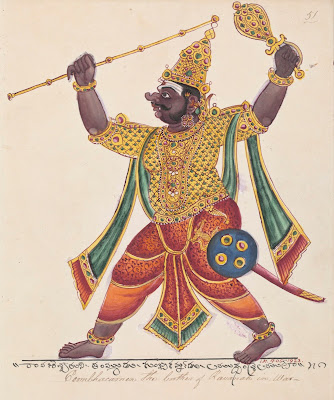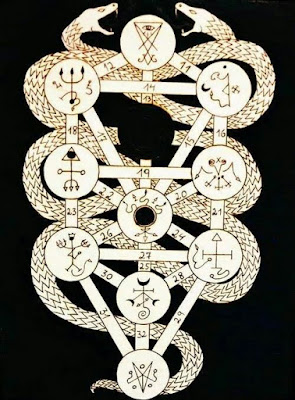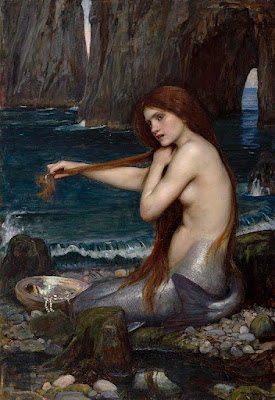The Rakshasa of Indian myth was new one. I had read a total of two Indian myths by this time so the Rakshasa was new to me. Looking at the entry in the Monster Manual you would be excused for thinking they were some sort of cat-headed humanoid. Much like the similarity named Rakasta from the D&D Expert module Ilse of Dread.
In my naïve understanding of the differences between what was Advanced Dungeons & Dragons vs to what I was playing Basic Dungeons & Dragons, I tried to reconcile many concepts, and the Rakshasa / Rakasta was one of the round peg in a square hole that got me thinking maybe these, in fact, different creatures and different games.
Now a day I just mix and match as I see fit.
But that was not the last time the Rakshasa was going vex my efforts.
Soon after I reconciled the whole Basic vs. Advanced D&D thing the next question, and one that stayed with me for a while, is why aren't these guys Devils? Certainly, they felt like devils, they were Lawful Evil outsiders. They liked Illusion magic. I played around with that idea for a while but never got it right. It wasn't until I dropped the whole "Demon vs. Devil" and embraced the "Fiend" idea did it come to me. WotC would end up doing the same thing in D&D 5 in 2014.
Back in 2013 I reclassified these creatures as Yaksas and I was pretty happy with this. That is until I began my research for my One Man's God series. For India, I went back and reread the Ramayana. Rakshasas in these are much more complicated. Especially named Rakshasa like Ravana and his sister Shurpanakha. Plus I learned more about Yaksas.
So. Where does that leave me today? Well. I want to do more research, but I think the classification of Rakshasa as a fiend belonging to the group of Asuras, who are sometimes referred to as "anti-gods."
Is this my final take on it? No. I am still doing more research and going back to the myths and stories, but I feel like I am on a good path now.
Rakshasa
Medium Fiend (Asura)
Frequency: Very Rare
Number Appearing: 1 (1d4)
Alignment: Chaotic [Lawful Evil]
Movement: 150' (50') [15"]
Armor Class: -4 [23]
Hit Dice: 7d8+21** (53 hp)
THAC0: 13 (+7)
Attacks: 2 claws, 1 bite or special
Damage: 1d3+1 x2, 1d6+1
Special: Illusory appearance, special magic resistance, spell-like powers
Save: Monster 7
Morale: 10 (10)
Treasure Hoard Class: XVII (F)
XP: 1,250 (OSE) 1,300 (LL)
Str: 14 (+1) Dex: 17 (+2) Con: 18 (+3) Int: 13 (+1) Wis: 16 (+2) Cha: 20 (+4)
Rakshasas belong to a group of evil outsider spirits known as Asuras. These creatures are an ancient primordial race of fiends that are sometimes known as the "anti-gods". Their main diet is human flesh and they use deception to get it. They often appear as animal-headed humanoids, with baboon and tiger being the most common, but they and also appear as multi-headed demons with long tongues and huge tusks. Regardless of the form they take a curiosity of the rakshasa is that its palms will always appear to be inverted; that is their palms on the "tops" of what humans would consider their hand and thus their fingers appear to bend backward.
When first encountered a rakshasa will use its ESP to detect whomever the victim trusts, then use illusion to assume that form. Once the victim lets his or her guard down the rakshasa will reveal its true self and attack. They are immune to normal weapons and magical weapons below +3 only do half damage. The rakshasa can’t be affected or detected by spells of 6th level or lower unless it wishes to be. It has a +2 on saving throws against all other spells and magical effects. A rakshasa would prefer to avoid combat, but when they do choose to fight they are vicious, enjoying the taste of blood as they fight.
All rakshasa have the following spell-like abilities:
- At will: detect thoughts, disguise self, mage hand, minor illusion
- 3/day each: charm person, detect magic, invisibility, major image, suggestion
- 1/day each: dominate person, fly, plane shift, true seeing
Rakshasas are evil but not unintelligent. They will know when to attack and when to hold back. A poisoned cup of tea takes care of an enemy just as well as claw to the neck.
Multi-headed Rakshasas: It is believed that the more head a rakshasa the more powerful it is. Each head would increase the creature's HD by 2 levels and Intelligence by 1 point for each head. Rakshasas with five or more heads become Large creatures.
--
There is likely a lot more I can say and do with these guys, but this is a great start. I am pretty happy with this as it is, but I know I am going to discover more.











